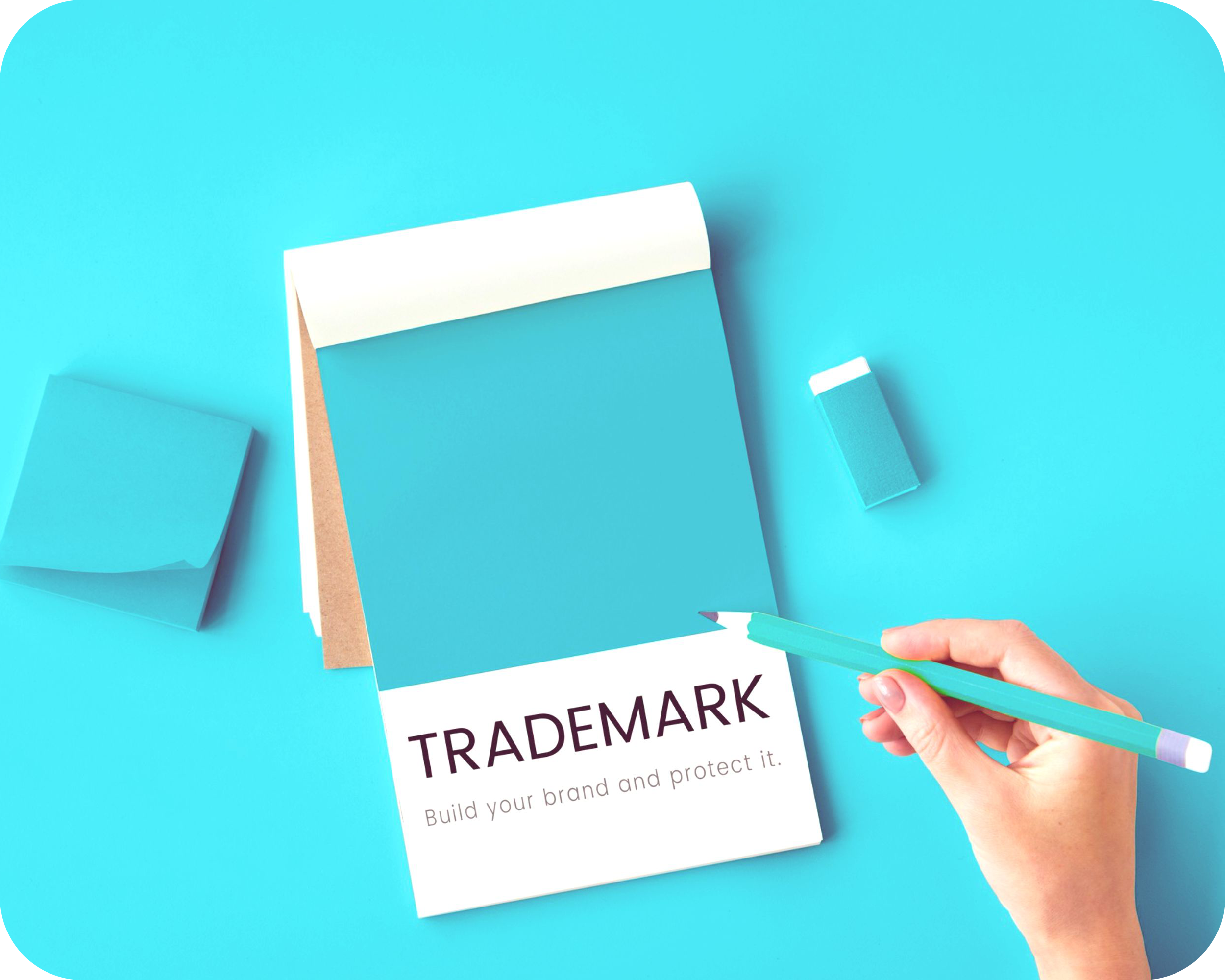Trademark Search
Easily Search and Find If the Trademark for your Business Name is Taken

Key Takeaways
- Trademarks are categorized by distinctiveness, and registering them grants several benefits. This includes a legal presumption of ownership and the exclusive right to use the mark, with the strongest marks being arbitrary or fanciful.
- A comprehensive trademark search is essential before registration to identify any potential conflicts with existing marks. This should include searches of official databases, alternative spellings, phonetic equivalents, visual similarities, and common law usage.
- After trademark registration, it is critical to monitor for infringement and preserve the strength and distinctiveness of your mark. This includes sending cease and desist letters and renewing your trademark at specific intervals to maintain protection.
Understanding Trademark Basics
A trademark is much more than a distinctive sign; it’s a powerful tool for protecting your brand and its reputation. Whether it’s a catchy name, a memorable logo, or a unique phrase, a trademark distinguishes your goods or services from those of others. This helps ensure you don’t infringe on someone else’s trademark. The main difference between trademarks and service marks lies in their application. Trademarks are used for goods, while service marks are applied to services.
Both types of marks can consist of words, phrases, symbols, designs, or a combination of these elements. A federally registered service mark can carry the standard registration symbol ®, while the symbol ℠ is used prior to registration. These symbols serve as a notice to potential infringers that your mark is protected by law. This means any unauthorized use is infringing on your rights.
Types of Trademarks
Trademarks are categorized based on their uniqueness into four types:
- Generic: the weakest and describe common terms associated with a category of goods or services.
- Descriptive: directly describe the product or service and must acquire a secondary meaning to be eligible for protection.
- Suggestive: suggest qualities or characteristics of the product or service, but do not directly describe it.
- Arbitrary or Fanciful: have no connection to the product or service, and are the strongest type of trademark.
Suggestive trademarks, on the other hand, require some imagination to connect them with the product or service, making them stronger than generic or descriptive marks. The strongest trademarks are Arbitrary or Fanciful, comprising either common words used in an unrelated context or entirely invented terms.
Benefits of Trademark Registration
Federal trademark registration, also known as federal registration, provides the following benefits:
- Legal presumption of ownership
- Exclusive right to use the trademark on or in connection with the goods or services listed in the registration
- Nationwide rights throughout the entire United States and its territories
- Visibility in a publicly accessible database
The right to use the ® symbol with a registered trademark acts as a deterrent to potential infringers and communicates to customers the credibility of the registration, enhancing brand recognition. Furthermore, registered trademarks can be recorded with U.S. Customs and Border Protection to prevent the importation of infringing goods, and can also form the basis for international trademark protection.
Conducting a Comprehensive Trademark Search
A comprehensive trademark search is necessary to register a trademark. This search involves looking for the exact trademark and its distinctive elements in official databases to identify any potential conflicts with existing marks. Beyond the official databases, your search should expand to include other databases and internet resources to identify conflicting uses with similar goods or services.
Broadening your search parameters to include alternative spellings and phonetic equivalents, as well as visually and aurally similar trademarks, can help ensure a thorough search. Leveraging search techniques such as AND NOT operators can help exclude irrelevant results and avoid narrowing your search prematurely by goods or services.
Identifying Similar Marks
Considering phonetic equivalents and visual similarities that could be confused with your proposed trademark is an integral part of searching for similar trademarks. This involves considering any variations that could cause confusion among consumers.
For instance, if you’re planning to register a word mark, you should consider similar sounding words or words with similar spellings. If you’re registering a design mark, you should consider designs with similar elements or patterns. Identifying these similar marks early on can help you adjust your trademark strategy and avoid potential conflicts.
Searching Multiple Sources
A comprehensive trademark search extends beyond the federal trademark database to include state and common law searches, playing a pivotal role in determining a trademark’s registration availability and ensuring no similar trademarks have been previously registered or applied for.
In addition to the federal trademark database, you should also perform a common law search by checking state trademark databases and the internet to uncover any existing common law usages. Common law usage refers to the use of a trademark in commerce, even if it has not been registered. Uncovering these uses can help prevent potential conflicts and ensure a smoother registration process.
Analyzing Your Trademark Search Results
Following a comprehensive trademark search, the subsequent step involves analyzing the search results. The USPTO database can be utilized to make informed decisions about the potential success of registering a new trademark. The Trademark Status and Document Retrieval (TSDR) system offers detailed information about trademarks, aiding in comprehensive analysis.
However, if a trademark search in the USPTO database is inconclusive, further research outside of the USPTO system is necessary. This could involve consulting with a trademark attorney or conducting additional searches in other databases or resources.
Assessing Likelihood of Confusion
One of the key aspects of analyzing your trademark search results is assessing the likelihood of confusion. This occurs when a trademark is similar enough to another that consumers may believe the goods or services originate from the same source.
Trademarks can be considered confusingly similar based on:
- Similarities in sound
- Similarities in appearance
- Similar meanings
- Similarities in commercial impression
For example, trademarks that are pronounced the same way, have a similar visual appearance, or convey a similar overall commercial impression could be considered confusingly similar.
Identifying Related Classes
Another important aspect of analyzing your trademark search results is identifying related classes of goods or services. This helps determine the scope of legal protection and ensures brand coverage for related products or services in the future.
The USPTO organizes goods and services into 45 different classes, which they use for assorted purposes including applications, fee assessments, and establishing a searchable trademark database. Each category of goods or services is assigned to one of these 45 international classes, numbered from 1 to 45.
The Trademark Application Process
Having conducted a comprehensive trademark search and analyzed the results, you can then proceed to the trademark application process. This involves filing an application with the United States Patent and Trademark Office (USPTO) and responding to any office actions that might arise.
An office action is an official letter from the USPTO where an examining attorney lists any legal problems with your trademark or application. These legal problems must be resolved before the USPTO can register your trademark.
Preparing Your Application
To prepare your trademark application, you must accurately identify the goods or services linked to the trademark, which is vital for assessing its registrability and ensuring accurate representation of your goods or services.
You can utilize the Trademark ID Manual to find acceptable descriptions of goods or services and pinpoint their corresponding international class numbers. Once you’ve prepared your application, you can submit it electronically through the Trademark Electronic Application System (TEAS), which also offers the convenience of electronic fee payment.
Responding to Office Actions
After submitting your pending application, you may receive an office action from the USPTO. This is an official letter that points out issues with your application that require a response from you.
Non-final office actions raise a legal problem for the first time, after which you have three months to respond, with the option for an extension. However, if your response does not overcome all objections, the examining attorney can issue a final refusal.
Working with a Trademark Attorney
Engaging a trademark attorney can prove advantageous in steering through the complexities of the trademark process. A trademark attorney with specific expertise in trademark law is more likely to provide superior service and ensure a successful registration.
Choosing a trademark attorney who handles trademarks exclusively and has regular USPTO interaction ensures the most effective representation. Hiring a private trademark attorney can provide you with professional assistance with trademark searches, registration, and dealing with any potential conflicts or issues.
Expertise and Experience
Expertise and experience should be key considerations when selecting a trademark attorney. Trademark attorneys who specialize in the complex field of trademark law are more adept at handling the intricacies of trademark searches and registration, making it essential to choose the right law firm.
It’s vital to consider an attorney’s track record and the number of trademarks they have successfully helped register when evaluating their expertise in trademark law. Furthermore, trademark attorneys must have a thorough working knowledge of USPTO procedures to navigate trademark filings effectively and minimize the risk of refusals.
Cost Considerations
It’s necessary to weigh your long-term trademark registration objectives against your available budget when hiring a trademark attorney. Beware of low-cost trademark registration offers as they might not cover all necessary services, potentially leading to higher expenses in the future.
It is essential for trademark registration services to be conducted or reviewed by qualified attorneys to avoid adverse effects on the registration outcome. When incurring costs for trademark registration, consider the attorney’s efficiency and professionalism to ensure effective use of business resources.
Protecting Your Registered Trademark
Upon registering your trademark, safeguarding it becomes important to preserve its strength and distinctiveness. This involves monitoring your mark for any unauthorized use and enforcing your rights when necessary.
Efforts to enforce trademark rights should typically begin with sending cease and desist letters to alleged infringers, which is often a cost-effective first step before engaging in litigation. It’s also important to renew your trademark registration at set intervals to maintain its protection.
Monitoring for Infringement
Monitoring for infringement requires vigilance in detecting unauthorized use of your trademark. This involves regularly checking for potential misuse by competitors and the public to enforce your rights effectively.
Using specialized monitoring tools like Google Alerts or Mention can help you receive notifications whenever your trademark is mentioned online, aiding in the monitoring process. In addition, trademark owners can employ watch services offered by trademark attorneys and companies which conduct regular database searches and alert owners of potential infringers.
Renewing Your Registration
Maintaining the protection of your trademark necessitates its timely renewal. This involves filing specific maintenance documents at set intervals, such as:
- Between the fifth and sixth years after registration
- Between the ninth and tenth years after registration
- Each subsequent renewal is due every ten years.
It’s crucial to ensure that your renewal filings, including ownership and associated goods or services details, are accurate. Trademarks can have indefinite protection as long as the owner uses the mark in commerce and adheres to regular renewal requirements.
Summary
In conclusion, understanding and navigating the world of trademarks is crucial for protecting your brand and its reputation. From understanding the basics of trademarks and conducting comprehensive searches to applying for registration and working with a trademark attorney, each step of the process requires careful consideration and strategic decision-making. With a registered trademark, you have the exclusive right to use your mark in relation to your goods or services, deterring potential infringers and enhancing your brand recognition.
Frequently Asked Questions
Can I search a trademark for free?
Yes, you can search for trademarks for free using the United States Patent and Trademark Office’s (USPTO) Trademark Electronic Search System (TESS).
How do you check if anything is trademarked?
To check if anything is trademarked, you can use the U.S. Patent and Trademark Office’s Trademark Electronic Search System (TESS) for free. Alternatively, you can visit the USPTO’s Public Search Facility or a Patent and Trademark Resource Center.
How much does trademarking a name cost?
Trademarking a name can cost $225 to $600 for a single class in the US, or around $889 in Europe. (Adapted from Answer 1)
What’s the difference between a trademark and a service mark?
The main difference between a trademark and a service mark is that trademarks are used for goods, while service marks are used for services. Both can consist of various elements like words, phrases, symbols, and designs.
How can I ensure a comprehensive trademark search?
To ensure a comprehensive trademark search, be sure to search for the exact trademark in official databases, consider phonetic and visual similarities, and search multiple sources including federal, state, and common law databases. This will help in covering all potential areas of trademark infringement.

